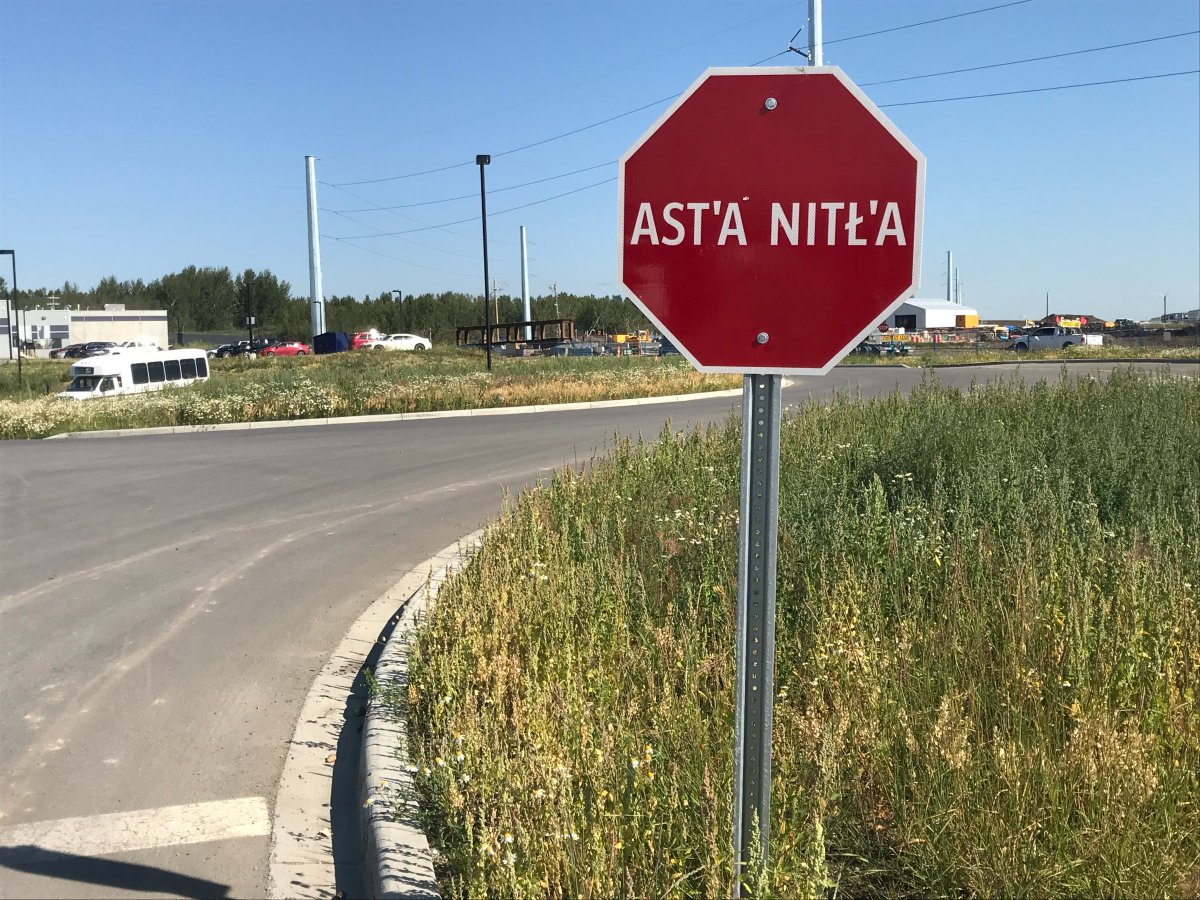New stop signs can be seen at some intersections on Tsuut’ina Nation, written in the community’s Indigenous language.

The 32 stop signs were put up in March of this year and can be seen in main traffic areas and at the Grey Eagle Resort and Casino parking lot.
Each one reads “Ast’a Nitl’a,” which means “Quit Moving.” The signs are one of the small steps the nation is taking toward community language revitalization.
“It was always in the plans for a lot of years, one of my mandates is to ensure our language survives,” Chief Lee Crowchild said.
The stops signs are part of the Tsuut’ina Gunaha Institute projects. The institute’s vision is to revitalize the Tsuut’ina language within the community through spoken classes, or written on building or road signage.
“We need to constantly be immersed and surrounded by it,” institute director Steven Crowchild said. “It’s more for our people, done for our kids and youth and to show the importance of it for our people.”
Choosing which phrase to use on the sign was a process, Crowchild said.
Indigenous languages have many diverse dialects and phrases that can be used to refer to one topic. Crowchild said he asked the elders and dialect groups how they say “Stop.”
Ast’a Nitl’a was the one phrase that kept coming up.
- ‘Blue Sky City’ unveiled as the new brand for the city of Calgary
- Southeast Calgary residents frustrated after strip mall parking lot potholes damage vehicles
- City buys back land after former Ernest Manning High School site sits empty
- ‘It is the love’: Wally the injured stray dog gets new ‘leash’ on life
The Loss of Language
The Tsuut’ina language is part of the Dene language family, which is the largest linguistic group in North America. However, the language is on the decline.
“We are considered a critically endangered language,” Crowchild said.
Due to the Indian Act in 1876 and the aim of residential schools to assimilate first nations people with dominant society at the time, Indigenous language and culture have been lost in the recent generations.
Ever since, first nations communities have been working to make sure their culture and language is revitalized.
“One of the ways to bring back the language is to make it very visible and normal,” Crowchild said.
“The stop sign was a way to increase awareness of our language in our own community.”
The stop signs are just the beginning for things to come for the Tsuut’ina Nation. More programs are being initiated through the community and the Tsuut’ina Gunaha Institute. The community wants to make sure the people are immersed in their language and culture, while also including the City of Calgary.

Comments